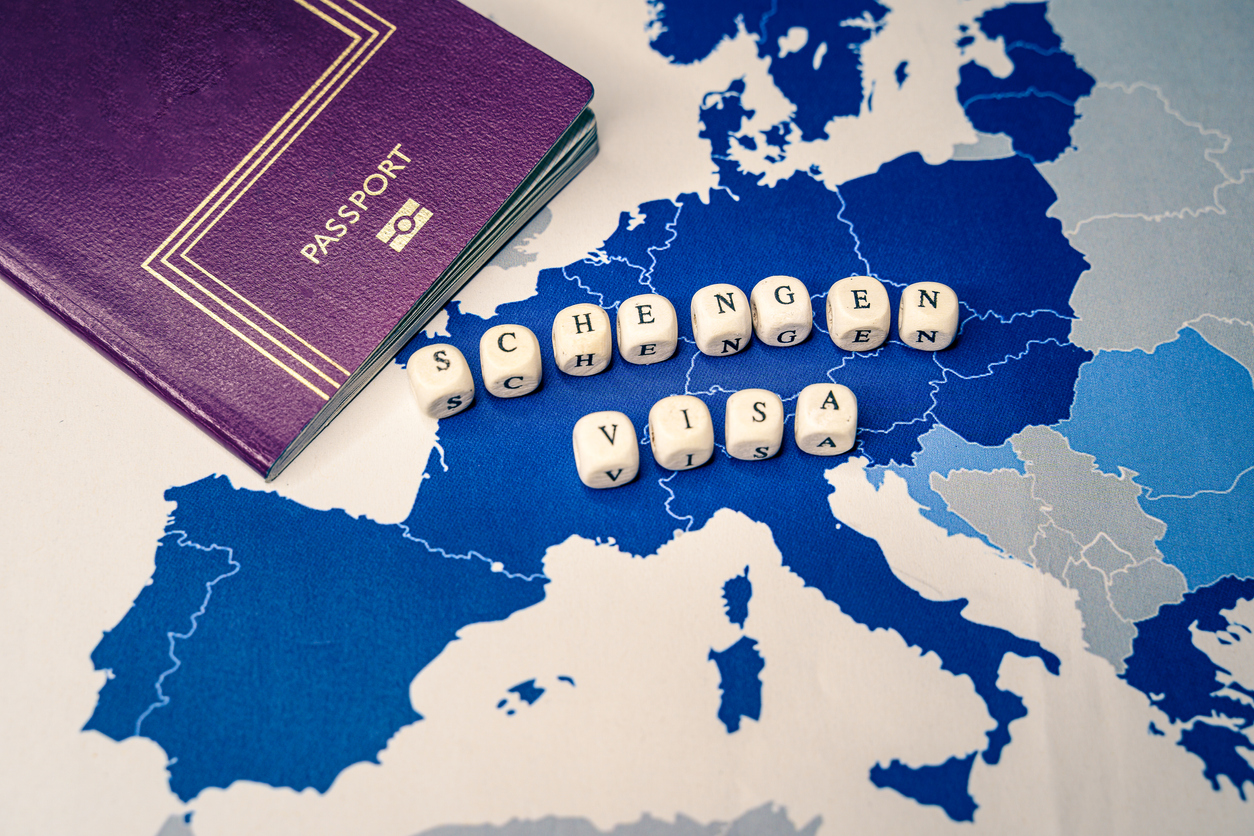Travelling for business is back on the agenda and the dreams of a holiday or a short break can once again become reality. But what immigration regulations need to be considered for entry into the European Union and especially those relating to the Schengen Area?
If you are not familiar with the Schengen Area, the following questions and answers may help.
Which countries are included in the Schengen Area?
The area currently consists of the following countries:
| Austria | Belgium | Czech Republic | Denmark |
| Estonia | Finland | France | Germany |
| Greece | Hungary | Iceland | Italy |
| Latvia | Liechtenstein | Lithuania | Luxembourg |
| Malta | Netherlands | Norway | Poland |
| Portugal | Slovakia | Slovenia | Spain |
| Sweden | Switzerland |
If I am travelling for business, will my activities be limited?
Generally, travellers who intend to travel for business purposes, i.e., visiting a business or company to engage in meetings, to make business deals, to recruit, to train (in some cases) can travel as business visitors.
Business visitor activities are in general limited to:
- Attending meetings, conferences, training events, seminars, interviews, trade fairs;
- Partaking in negotiations and signing deals and contracts;
- Carrying out site visits;
- Fact finding and gathering information.
Examples of activities that are likely to require a work permit include:
- Work site supervision, conducting surveys;
- Performing equipment or systems installation, troubleshooting or consultancy;
- Being placed on a temporary assignment to a vacant or absent position
I am a British citizen; will I need a visa to travel to a Schengen Member State?
British citizens are visa exempt for a stay of up to 90 days in any 180-day period.
For those nationals that do require a visa to visit for business purposes or for tourism, what visa is to be applied for?
The application for a short stay, category C Schengen visit visa is to be filed with the relevant diplomatic post of the country of first entry. The country of first entry and the one through which they are obtaining the visa, should also be the primary destination whilst the applicant holds the Schengen visa. In other words, the applicant should travel more to this country than any other in the Schengen region.
How long does it take to get a Schengen Visa?
Processing times vary greatly by the country/diplomatic post and are largely discretionary. In general, applications are processed in around 3 to 15 working days. If more than one destination country is listed on the application, the application will also need to be approved by the other relevant destination countries before the visa is issued by the primary destination (and port of first entry) country.
What validity of visa will be issued?
The issued validity of a Schengen visa varies by country and diplomatic post. Generally, the validity is discretionary. Consulates typically issue a shorter visa for the first application and issue longer subsequent validities as the business / tourist traveller proves they are complying with the conditions of the visa.
Please note, the duration of stay allowed on a uniform multiple entry visa cannot exceed 90 days in every six-month period. The duration of the stay allowed by a multiple entry C visa, valid between 6 months and 5 years is 90 days within every six-month period.
Can the issued visa be used to travel to different countries in the Schengen Area?
When an applicant is issued with a multiple entry Schengen visa this will permit travel throughout the Schengen area, within the validity period of the issued visa.
Should you have further questions, or wish to seek our support, please contact:
Kerry Hough, Global Immigration Manager DDI: 020 7317 6754 E-mail: [email protected]
